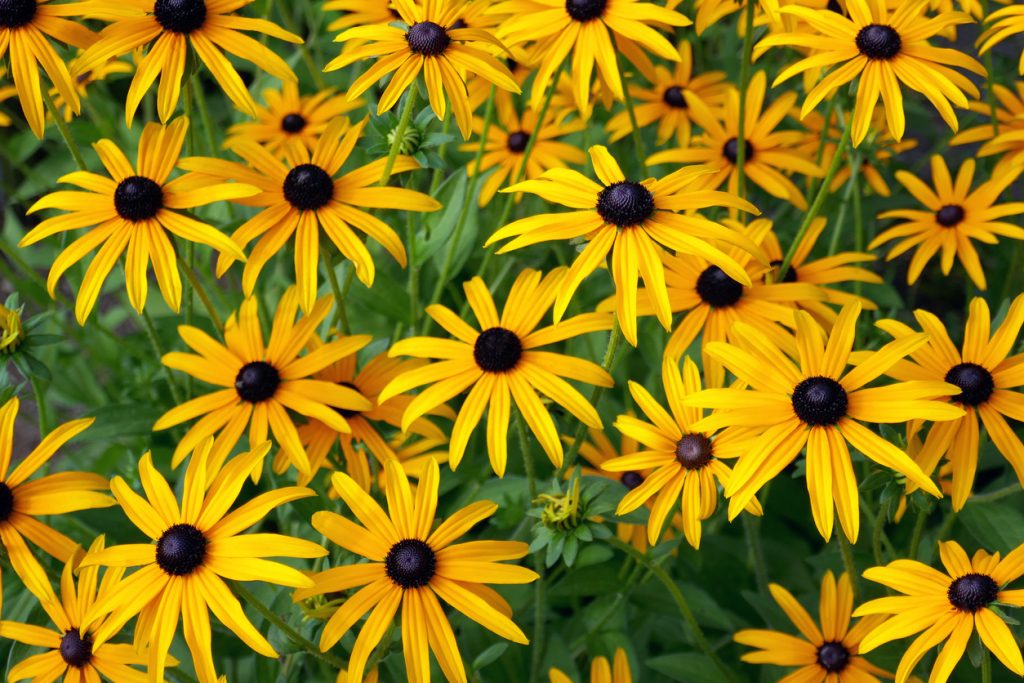Salinized soils present unique challenges in landscapes of all sizes. Causes include application of synthetic fertilizers and irrigation without proper drainage. Deicing salts and dog urine are also common causes.
Removal of natural vegetation can also be a culprit. The clearing disrupts the balance of a site. Excess water accumulates. Native plant roots that filtered and channeled excess water into the ground are gone. As groundwater level rises, salts deep in the soil rise to the surface. Without proper drainage, these salts remain and buildup in the topsoil.
But several native plant options have adapted to survive in salty soils. Salt-tolerant natives can help you create sustainable, thriving gardens that benefit local ecosystems. Here are five salt-tolerant native plants to consider for your planting project.
Asters (Symphyotrichum spp.)
When many summer flowers are past their prime, asters offer stunning late-season blooms. These hardy perennials can withstand saline soils and salty winds. Native asters are available in various colors and heights. Combine shades of purple, pink, and white for a successional display. Also, asters also attract butterflies and other beneficial pollinators.
Shop asters and other native perennials at Forrest Keeling
Shining Blue Star (Amsonia illustris)
Shining blue star is a striking native plant. It occurs in sandy or rocky soils on gravel bars or along streams in the Ozarks. It also thrives in salinized soils. This low-maintenance perennial offers pale blue spring blooms, which attract pollinators. Its shiny green, strap-like leaves turn a striking golden fall color.
Bigfruit Evening Primrose (Oenothera macrocarpa)
The perennial bigfruit evening-primrose can be trailing or upright. Also known as Missouri evening-primrose it grows eight to 10 inches high. This drought-tolerant plant has showy, teacup-sized, yellow flowers.
Like other members of the evening primrose family, the flowers open in the evening. From late afternoon into the following morning nocturnal insects visit the blooms. They offer a food source for nighttime pollinators like hawk and sphinx moths. Another benefit of bigfruit evening primrose is that it flowers over a long period of time. Their bloom time stretches from spring to mid-summer.
Black-eyed Susan (Rudbeckia hirta)
Black-eyed Susan is a classic native wildflower that adapts well to salinized soils. Resilient and drought-tolerant, this native is low-maintenance. The summer flowers attract a diverse array of pollinators like bees and butterflies.

Shop black-eyed Susan and other native perennials at Forrest Keeling
Bald Cypress (Taxodium distichum)
Bald cypress is a deciduous conifer tree. It excels in a range of soil conditions, including wetlands or saline soils. Bald cypress trees feature unique foliage that turns a striking bronze color in the fall. These trees’ extensive roots help control erosion. They also provide a breeding habitat for several species of reptiles and amphibians.
Find Salt-Tolerant Natives at Forrest Keeling
Planting salt-tolerant natives creates resilient landscapes that benefit an area’s ecological sustainability. Forrest Keeling is a leader in growing native plants. We grow hundreds of native species that are alternatives to invasive species. These plants aid in conservation restoration projects nationwide.
Contact a Forrest Keeling representative today for more information. We’ll help you find the perfect natives for your next projects.
Forrest Keeling…it’s where the best trees begin!
